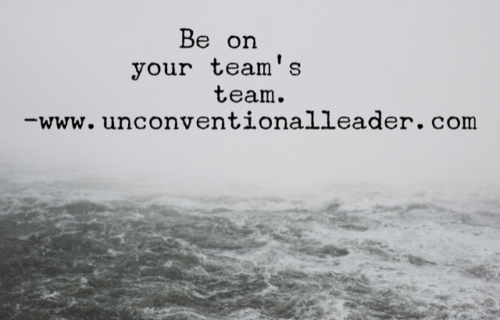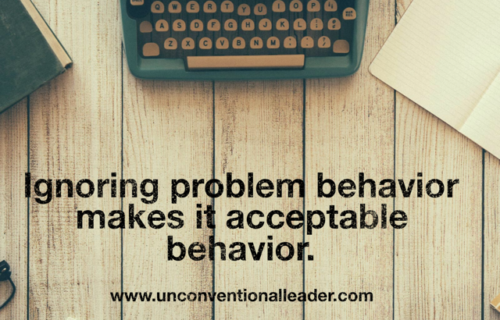4 “No Fail” Motivation Strategies
 Money is great! It makes the world go around. It motivates some to perform better for a while (in it’s pursuit) but that “superior” performance is usually short lived. In the same respect, threats, barking orders and intimidation have never moved any team that I was on to surpassing goals and moving to new levels of productivity or creativity. In 22 years of leading people, I have found that the essence of motivating team members comes from within. That, if you really want to “reach in and touch” that inner part of a person (to find the piece that motivates, moves them past goals, and vests their loyalty) each person has to be treated as such – a person! To motivate your team and catapult them to the next level, try these 4 “No Fail” strategies – all it costs is a little time and reflection.
Money is great! It makes the world go around. It motivates some to perform better for a while (in it’s pursuit) but that “superior” performance is usually short lived. In the same respect, threats, barking orders and intimidation have never moved any team that I was on to surpassing goals and moving to new levels of productivity or creativity. In 22 years of leading people, I have found that the essence of motivating team members comes from within. That, if you really want to “reach in and touch” that inner part of a person (to find the piece that motivates, moves them past goals, and vests their loyalty) each person has to be treated as such – a person! To motivate your team and catapult them to the next level, try these 4 “No Fail” strategies – all it costs is a little time and reflection.
Strategy #1: Communication
Since the beginning of time, mankind has used some form of communication to get things done. One would think that with so much practice, communicating would be a perfected art by now. Unfortunately, this is far from the norm. More often, we assume that people are mind readers. We assume they know what is expected, have all the knowledge they need to accomplish the task, and are even able to tell how they are performing. These assumptions can cause enormous problems at all levels of the organization and at all stages of an evolution. Good communicators know that communication is a two way street and that both lanes need to stay open. I remind myself to keep both lanes open by posting this equation in my office: “Q2L + S2S + S2A = GR8 COMMS.” Translated: Quick to Listen plus Slow to Speak plus Slow to Anger equals Great Communication. This equation helps me be actively involved in a conversation so that team members are truly heard. I am sure it will work the same for you. Write it down, post it, and practice it daily. You’ll be surprised at how much of a difference it makes.
Strategy #2: Appreciation
No words carry more weight and motivate team members more than “thank you.” The best part of this strategy is that it doesn’t cost a thing! This may seem like common sense but I don’t think that common sense is all that common. As individuals, who doesn’t like to be appreciated for the hard work that is put into a project? As leaders, why wouldn’t we pass that along to team members so that they know that we notice? Maybe it’s due to the hectic nature of today’s world of work – we get so busy that simple, “common sense” things get lost in the shuffle. Take time out and say thank you – it is the most cost effective reward you can give. Be specific and be genuine, it makes the difference.
Strategy #3: Value
When I am working on a project, I like to know how what I am doing factors into the end result. In short, what value am I providing? What is my contribution? Clear objectives motivate, provide value, and let team members know how they fit into the value chain. A few years back, I had a supervisor that took the time each day to cover the “game plan” for our overall mission. During our daily meetings, he would cover the “why” of what we were doing. This provided me with the bigger picture – I knew my contribution, my value to the end result and I was motivated to exceed the expectation. Value your people by letting them know their value.
Strategy #4: Enjoyment
A team that plays together stays together. I have had very few jobs where I woke up and said, “I can’t wait to do this today!” I have, however, had numerous jobs that I couldn’t wait to go to due to the atmosphere of fun that was created by a great leader or a great team. These were people who knew how to inject an element of humor, play and laughter into the most stressful of situations. Their actions broke down barriers, reduced stress and allowed the team to let go of inhibitions to reach their true potential. I don’t think this is a rare gift, I believe that each of us has the ability to impact the culture positively if we “lighten up” and look for the funnier side of things. The words work and play shouldn’t be opposites, they should be synonyms!
These 4 “No Fail” strategies will help leaders inspire, motivate and build a covenant of trust with your team. Trying them doesn’t cost a penny; they don’t need to be decided upon by a committee; and you should not be “faulted” for employing them (if you are, it’s time to find a new vocation). All it takes is time, reflection and care. Take the risk, step out, and connect with your people today. The return on investing yourself in your people will provide a much greater reward than just the bottom line.





